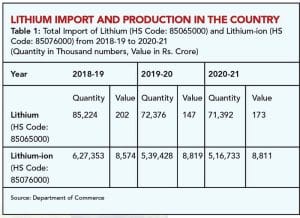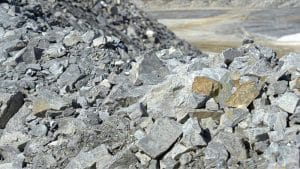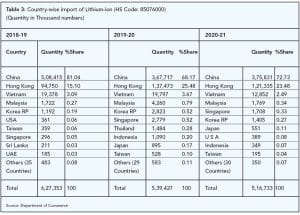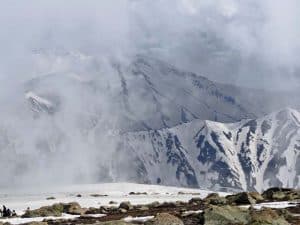The Indian EV industry wore a scar despite vying for a ‘Made in India’ status. The imports of lithium-ion battery packs until local produce pick up pace proved a sore point for the industry. It continues to dictate EV prices despite the fall of battery costs at a 10 per cent CAGR estimated by Bloomberg between 2018-24. Despite the subsidies extended under schemes like the FAME II scheme and incentivisation through Production Linked Incentive (PLI) for Advanced Chemistry Cell (ACC), the EV ecosystem weighs under the high procurement costs of rare earth metals like lithium. The PLI outlay alone is Rs.18,100 crore for five years from May 2021, to give a perspective. No wonder then, the recent discovery of lithium in Jammu & Kashmir (J&K) has given a new lease of life to Original Equipment Manufacturers (OEMs) betting big on EVs. More and more EV players are today collaborating with companies they can leverage to have greater control of the end-to-end value chain for standardisation and realisation of better Economies of Scale (EoS).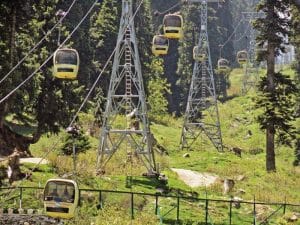
The advancements in battery technologies such as metal-air, solid-state, and lithium-sulfur batteries continue to be under research. The dependence on rare earth metals continues. Battery until recently was estimated to account for 30-35 per cent of the cost in the entire value chain as per the status quo analysis of EV segments undertaken by the Nature Conservation and Nuclear Safety (BMU), the Nationally Determined Contribution-Transport Initiative for Asia (NDC-TIA), a joint project of seven organisations that had China, India, and Vietnam part take on behalf of the German Federal Ministry for the Environment. It is no secret that rare earth metals like lithium, nickel and cobalt assume significance. According to the World Economic Forum (WEF) study, battery recycling apart from unearthing reserves would be crucial to provide nine per cent of lithium, 13 per cent of the global battery demand for cobalt, and five per cent of nickel in 2030. R&D allocations will also be key.
The Geological Survey of India (GSI) made headlines when for the first time it established Lithium inferred resources (G3) of 5.9 million tonnes in the Salal-Haimana area of Reasi District of J&K (UT). There are further exploration activities in store for J&K when it comes to identifying lithium resources. It is only post the completion of further exploration that the estimated value of lithium in J&K will be known. As a follow-up exercise, GSI is also known to undertake another reconnaissance G4 stage exploration programme on lithium and associated mineral in the Panasa, Dugga, Baldhanun, Chakar, Sangarmarg (Saro-da-Bas) area of the Reasi district. The GSI is known to generate the baseline geoscience data through mapping that entails geological, geochemical, and geophysical as a prerequisite for identifying the potential area for systematic mineral exploration. Based on the mapping outcome the exploration programme will extend to various mineral commodities that will be expanded to pan India.
Coming back to lithium alone, GSI and Mineral Exploration & Consultancy Ltd. (MECL) a number of exploration projects in lithium are expected to be undertaken. A driving factor is that the Ministry of Mines provides 100 per cent funding from National Mineral Exploration Trust (NMET) to the state governments and private exploration agencies for taking up lithium exploration projects. The Atomic Minerals Directorate for Exploration and Research (AMD) of the Department of Atomic Energy, explores lithium in parts of Mandya and Yadgir districts, Karnataka. Khanij Bidesh India Ltd. (KABIL), a Joint Venture (JV) of three CPSEs under the Ministry of Mines, is known to have signed a Non-Binding Memorandum of Understanding (MoU) with three State-owned organisations of Argentina. The MoU entails information sharing on prospective mineral acreages of lithium. In addition, a G2G MoU has been signed between the Government of India and the Government of Australia for cooperation in the field of mining and processing of critical and strategic minerals such as Lithium. KABIL has signed a detailed MoU with the Critical Minerals Facilitation Office (CMFO), Department of Industry, Science and Resources (DISER), Australia for identifying lithium and cobalt assets for joint investment decisions.
15 other resource-bearing geological reports (G2 & G3 stage) and 35 geological memorandums are also on the lines. These have been submitted to the respective state governments at the time of the 62nd Central Geological Programming Board (CGPB) meeting held on February 09, 2023. Out of these 51 mineral blocks, barring gold, some blocks boost resources of commodities like potash, molybdenum, and base metals spread across 11 states of Jammu & Kashmir (UT), Andhra Pradesh, Chhattisgarh, Gujarat, Jharkhand, Karnataka, Madhya Pradesh, Odisha, Rajasthan, Tamil Nadu and Telangana. It is noteworthy that the blocks were prepared as an outcome of studies undertaken by the GSI from the field seasons of 2018-19 to date. Coal and lignite reserves have also been found. That’s not it. In 2023-24, GSI will take up 966 programmes comprising 318 mineral exploration projects including 12 marine mineral investigation projects. It is based on the priorities set by the Government of India and the importance and urgency of proposals presented by the members and stakeholders, the Annual Programme of GSI is given a final shape.
Global benchmarking
In 2009, when China was known to have adopted a New Energy Vehicle (NEV) plan to leapfrog existing automotive technologies, it launched a pilot in 10 cities. Among policy measures to promote NEV, China mandated government procurement, reduced taxes, direct subsidies to manufacturers, consumer subsidies, industrial policy ‘Made in China 2025, NEV credit targets, and subsidised the charging infrastructure. To boost the local supply chain of EV components key strategies adopted by China through above mentioned policy measures include entering into Lithium offtake deals with lithium-rich countries besides enhancing its production and mining of rare earth metals. If one were to look at global lithium reserves, as per the 50 Deloitte analysis, USGS Mineral Commodity Summaries 2019, Australia accounts for six mn metric tonnes out of which, lithium amounts to 2.7 mn metric tonne alone. Chile leads the pack on lithium reserves at eight mn metric tonnes followed by Argentina and China. Now India joins the race with the discovery of the treasure chest.



